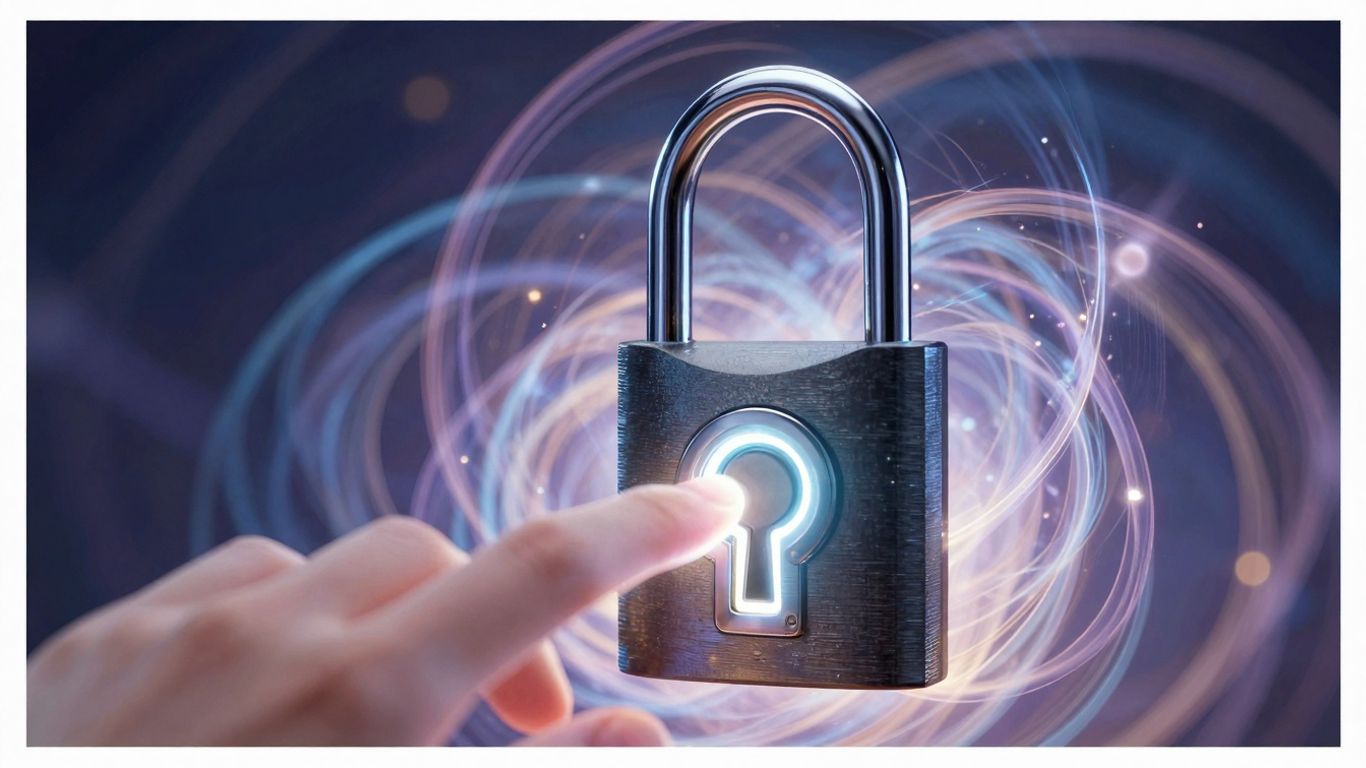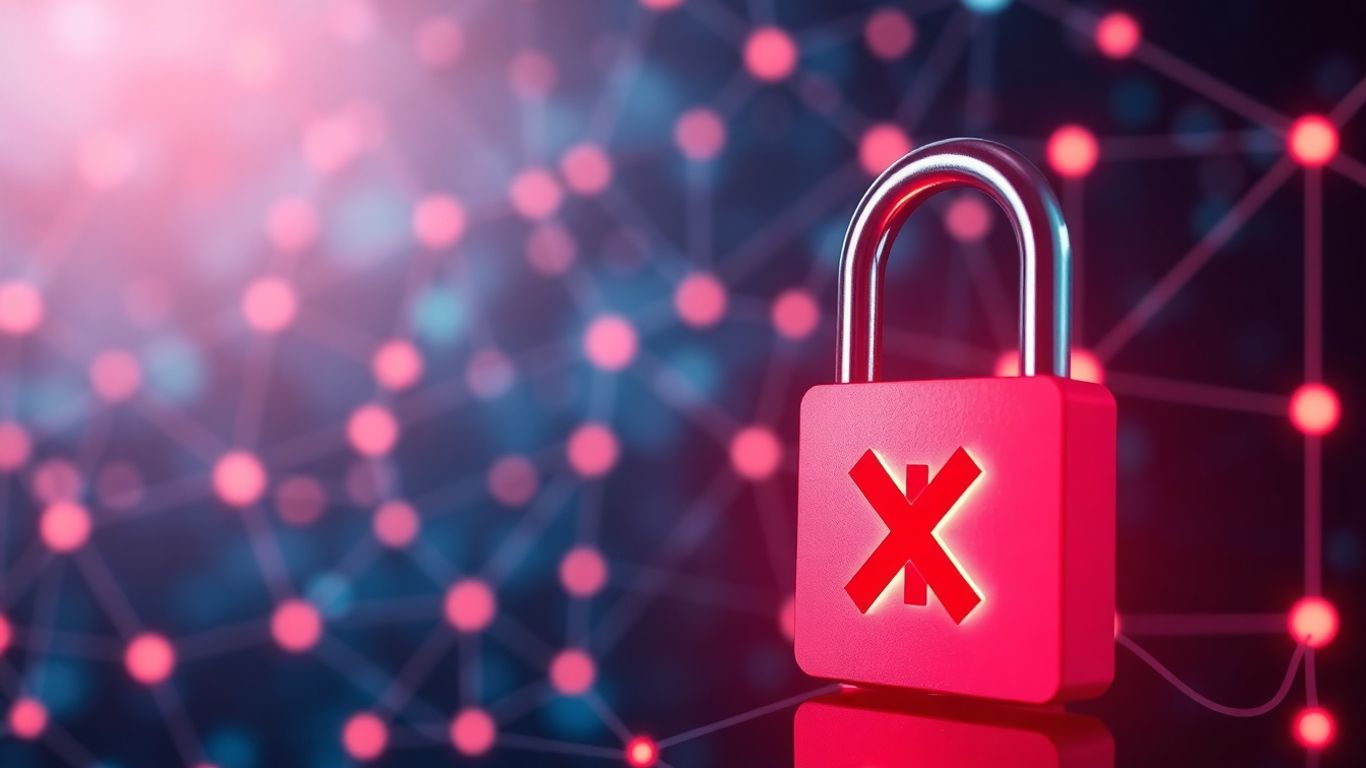[ newsletter ]
Stay ahead of Web3 threats—subscribe to our newsletter for the latest in blockchain security insights and updates.
Thank you! Your submission has been received!
Oops! Something went wrong. Please try again.
Discover the Smart Contract Trust Score: a single metric powered by AI for dynamic security assessment, offering actionable insights for investors and enhancing ecosystem security.





So, you're probably wondering about this whole 'smart contract trust score' thing. It sounds complicated, right? Well, it doesn't have to be. Basically, it's a way to figure out how much you can rely on a smart contract, kind of like checking a product's reviews before you buy it. We're going to break down what goes into these scores, how fancy AI is helping, and why it all matters for everyone involved, from big investors to regular users. Think of it as a simple number that tells a bigger story about security and reliability in the blockchain world.
So, what exactly is this "Smart Contract Trust Score" we keep hearing about? Think of it as a grade for a smart contract, but instead of A, B, C, it's a number that tells you how reliable and secure that piece of code is likely to be. It's not just about whether the code works, but whether it's likely to work safely and not get exploited.
At its core, a Smart Contract Trust Score is a quantitative measure designed to give users and investors a quick snapshot of a smart contract's security and dependability. It's built on the idea that trust isn't just a feeling; it can be calculated based on observable data and past performance. The goal is to distill complex security analyses into a single, easy-to-understand metric. This score helps bridge the gap between technical code audits and the need for accessible risk assessment for everyone involved in the blockchain space.
Creating a reliable trust score isn't a simple task. It involves looking at several different angles:
Traditionally, smart contract security has relied heavily on static audits. These are like a one-time check-up performed by human experts before a contract goes live. They're important, but they have limitations. The blockchain world moves fast, and new vulnerabilities can emerge, or operational practices can change after an audit is complete. This is where the idea of a dynamic trust score comes in. Instead of a single report, a dynamic score is continuously updated, reflecting the contract's current state and ongoing behavior. It's like having a doctor constantly monitoring your health, not just giving you a check-up once a year. This ongoing assessment is key to understanding the real-time risk associated with a smart contract.
The challenge with smart contracts is their immutability once deployed. A bug or vulnerability found after deployment can lead to irreversible financial losses. This makes proactive and continuous security assessment not just a good idea, but a necessity for protecting users and assets in the decentralized ecosystem.

So, how do we actually get these trust scores? It's not just about looking at a contract and saying, 'Yep, looks good.' That's where artificial intelligence really steps in. Think of AI as the super-smart detective that can sift through mountains of data way faster than any human ever could. It's what makes the whole idea of a dynamic, reliable trust score actually possible.
Traditional security audits are like a one-time check-up. You get a report, and then you're on your own. But the crypto world moves at lightning speed, and new vulnerabilities pop up all the time. AI changes the game by constantly watching what's happening. It's always on, checking for suspicious activity, code changes, or anything that looks a bit off. This means the trust score isn't just a snapshot; it's a living, breathing assessment that updates as conditions change. This continuous monitoring is key to staying ahead of threats, making sure the score reflects the current security posture, not just what it was last week. It's like having a security guard who never sleeps.
Instead of one big AI brain, imagine a whole team of specialized AI agents working together. That's the idea behind multi-agent systems. You might have one agent focused on code patterns, another on transaction history, and yet another on network interactions. They all talk to each other, sharing information and insights. This way, you get a much more complete picture. It's not just about finding a single bug; it's about understanding how all the different parts of a smart contract and its ecosystem interact. This holistic view helps catch complex issues that a single analysis might miss. It's like having a whole team of experts, each with their own specialty, collaborating on a single project.
Now, for the techy bit. A lot of this AI magic relies on something called the Transformer architecture. You might have heard of it in relation to large language models. In the context of smart contracts, it's incredibly useful because it's really good at understanding context. Smart contracts aren't just lines of code; they operate within a larger ecosystem. The Transformer architecture allows the AI to process huge amounts of information – up to 131,072 tokens per analysis, which is a lot! – and understand the relationships between different pieces of data. This means it can grasp the nuances of contract interactions, identify subtle vulnerabilities, and provide a more accurate assessment. It's this ability to process and understand complex context that really sets AI apart in calculating a meaningful trust score. This advanced approach helps identify potential security flaws early in the development lifecycle, thereby strengthening the overall security of smart contracts [6544].
The move towards AI in trust score calculation isn't just about speed; it's about depth and adaptability. Traditional methods often provide a static view, which quickly becomes outdated in the fast-paced blockchain environment. AI, through continuous monitoring and sophisticated analysis techniques, offers a dynamic and more accurate reflection of a smart contract's security. This shift is vital for building genuine trust in decentralized systems.
So, what's the point of all these fancy trust scores? It's not just about having a number to look at. These scores are meant to actually help people make better decisions and keep the whole crypto space safer. Think of it like a credit score, but for smart contracts and wallets. It gives you a quick snapshot of risk.
For regular folks just trying to get by in the crypto world, these scores are a game-changer. Instead of digging through lines of code or trying to understand complex audit reports, you get a simple score. This makes it way easier for anyone, not just tech wizards, to figure out if a project or a wallet seems risky.
The goal is to democratize security information, making it understandable and usable for everyone involved in the blockchain ecosystem, from seasoned developers to newcomers.
Trust scores aren't just for looking back at what happened; they're also about spotting trouble before it starts. By constantly watching how contracts and wallets behave, AI systems can flag unusual activity that might signal an upcoming attack or a scam.
Here's how it works:
This kind of early warning system is super important in the fast-paced crypto market where things can go wrong in minutes.
When more projects and users start using trust scores, it makes the whole blockchain environment more secure. It's like having a community watch for smart contracts. Projects that maintain high trust scores are more likely to attract users and investment, creating a positive feedback loop.
While smart contract security is a huge piece of the puzzle, it's not the whole story. Think about it: even the most secure smart contract can be compromised if the wallets interacting with it are not. That's where wallet trust scores come into play. They're like a credit score, but for your digital assets and how they move around.
So, how do we even start figuring out if a wallet is trustworthy? It's all about looking at what it does. We examine transaction patterns – is it moving large amounts of funds unexpectedly? Is it interacting with known risky contracts? We also look at the history of interactions. A wallet that has consistently engaged with reputable protocols over a long period is generally going to be seen as more trustworthy than one that suddenly starts interacting with a bunch of new, unproven projects.
It's not just about what a single wallet does, but also who it's connected to. If a wallet is frequently interacting with wallets that have been flagged for suspicious activity, that's a red flag. We can map out these network relationships to get a broader picture. On-chain behavior is key here. This includes things like:
This kind of deep dive into on-chain activity helps paint a more complete picture of a wallet's risk profile.
Ultimately, a wallet trust score isn't just a single number; it's the result of an integrated risk assessment. It combines the analysis of individual wallet behavior with its connections within the broader blockchain ecosystem. This allows for proactive threat detection, helping users and investors avoid potential pitfalls. For instance, a wallet might have a good individual history, but if it suddenly starts interacting with a newly deployed, unaudited smart contract, the trust score would likely reflect that increased risk. This kind of dynamic scoring is what we need to keep pace with the fast-moving crypto world. It's about moving beyond just looking at the code of a smart contract and considering the entire environment it operates within, including the actors using it. You can find tools that provide these kinds of scores, like those available through partners like Etherscan.
Trust in digital systems is built on evidence. For wallets, this evidence comes from their observable actions on the blockchain. By analyzing these actions, we can build a quantifiable measure of trustworthiness, helping to reduce uncertainty and risk for everyone involved.
Remember when we used to think a quick once-over was enough? That's kind of how traditional smart contract audits felt. They were often manual, time-consuming, and frankly, pretty expensive. You'd get a report, and then what? It was a snapshot in time, and the code could change, or new vulnerabilities could pop up. Plus, not every project could afford a top-tier audit, leaving a lot of them exposed. It’s like getting your car inspected once a year – it’s better than nothing, but it doesn’t catch every little thing that might go wrong between inspections.
Because of those limitations, we've seen a big push for something more. We need checks that happen all the time, not just once. Think about it: smart contracts handle real money, and things move fast in the blockchain world. A vulnerability found today might be ancient history tomorrow, or a new exploit method could be discovered overnight. This is where automated systems come in. They can scan code constantly, looking for issues as they arise. It’s about moving from a yearly check-up to having a constant health monitor for your code. This continuous analysis is key to staying ahead of the bad actors.
This is where AI really shines. Traditional methods just can't keep up. AI-powered tools can analyze code at speeds that are frankly mind-blowing – we're talking thousands of times faster than a human auditor. And it's not just about speed; it's about accuracy too. AI can spot complex patterns and subtle flaws that a human might miss, especially when dealing with massive codebases. Tools built on advanced architectures, like those using transformer models, can process huge amounts of context, giving them a much deeper understanding of the code. This means fewer missed vulnerabilities and fewer false alarms, making the whole process more reliable and efficient. It's a game-changer for smart contract security, making robust checks more accessible and effective for everyone involved in the blockchain industry.
So, how do we actually put this whole Smart Contract Trust Score thing into practice? It's not just about having a fancy number; it's about building a system that's reliable and makes sense to everyone involved. We need a solid foundation for this, and that means looking at the data we use and how we prove things happened.
First off, we need to be smart about what data we're actually looking at. It's easy to get lost in a sea of information, but we need metrics that really tell us something. Think about things like:
These aren't just random numbers; they're pieces of evidence that, when put together, paint a picture of the contract's trustworthiness. It’s about moving beyond just looking at the code itself and considering its real-world performance.
This is where things get really interesting. We can't just take someone's word for it. We need to be able to prove that interactions happened and that feedback about those interactions is legitimate. This is where blockchain's strengths really shine. By using verifiable interactions, we create a chain of evidence that's hard to fake. Imagine a system where every time someone uses a smart contract, that interaction is recorded immutably. Then, any feedback or review related to that specific interaction is also linked back to it. This makes the whole process much more transparent and trustworthy. It’s like having a public ledger of good and bad experiences, all tied to actual events.
The goal here is to build a system where trust isn't just an opinion, but something that can be backed up with concrete, verifiable proof. This means every piece of data contributing to the trust score needs to be linked to a real event on the blockchain, making it difficult to manipulate or fabricate.
Now, if we have different companies or services all calculating trust scores, they can't all be using their own little piles of data. That would be a mess, and the scores wouldn't mean much. We need a common ground, a universal evidence base that everyone can access. This means all the verifiable interactions and feedback are stored in a way that multiple trust providers can use. Think of it like a shared library of verified experiences. This way, even if different providers use different algorithms to calculate the final score, they're all starting from the same, reliable set of facts. This competition among providers, all working from the same evidence, can actually lead to better and more accurate trust scores for everyone. It’s about creating a standardized way to measure trust, making it more reliable across the board. This approach helps in building trust in crypto ecosystems by providing transparency through real-time analysis of blockchain data, flagging unusual activity, and verifying transaction histories to detect inconsistencies [0d8f].

So, imagine you need to know if a smart contract is, you know, trustworthy. You could try to figure it out yourself, but that's a lot of work, right? That's where 'Trust Scores as a Service' comes in. Think of it like hiring a professional to check things out for you. These services take all the complicated data and turn it into a simple score, making it way easier for regular folks to understand the risk involved.
It's not just one company doing this, either. We're seeing a bunch of different providers popping up, each with their own way of calculating these scores. They might use different algorithms or focus on different aspects of a contract's history. This competition is good because it means users can pick the service that best fits what they're looking for. Some might even offer different pricing tiers, kind of like how you can get different levels of service for your internet.
Most of these services aren't free, which makes sense. They've got to pay for the fancy AI, the data collection, and the smart people running the show. So, you'll likely see a fee involved, maybe a subscription or a per-score charge. It's a trade-off: you pay a bit of money, but you get a much clearer picture of the risks without having to become a blockchain security expert yourself.
What's really important, though, is how they get their scores. The best services will be super clear about the evidence they use. They won't just make stuff up. They'll point to actual interactions that happened on the blockchain and show how they factored into the score. This means you can actually check their work, in a way. If a service can prove that the interactions they used to calculate a score really happened, then you can trust their score a whole lot more. It's all about transparency and making sure the scores are built on solid, verifiable data, not just guesswork.
Here's a quick look at what goes into a good trust score:
The real value of a trust score service isn't just the score itself, but the clarity and confidence it provides to users. When the underlying data and the methods used to process it are transparent and verifiable, the score becomes a powerful tool for informed decision-making in the complex world of smart contracts.
So, we've talked a lot about how smart contracts are changing things, but let's be real, security is still a big deal. Relying on just one number to tell you if something is safe might seem too simple, but that's kind of the point here. A single, clear score for smart contract trust aims to cut through all the complex details. It pulls together a bunch of important stuff – like how the code is built, how it's being run, and what's happened with it before – into one easy-to-understand rating. This way, people can get a quick idea of the risk without needing to be a blockchain expert. It's about making security more accessible for everyone involved, from big investors to regular users just trying to figure things out.
Think of a Smart Contract Trust Score like a grade for a smart contract. It's a number that tells you how safe and reliable a smart contract is. It looks at the code, how it's being used, and its past performance to give you an idea of the risk involved.
It's calculated using smart technology, like Artificial Intelligence (AI). This AI constantly checks the contract's code, how it works with other parts of the system, and if it has any past issues, giving a more up-to-date view than just a one-time check.
Traditional audits are like a snapshot in time. They check things once and can be slow and expensive. A single Trust Score is dynamic, meaning it's always updating. This gives you a more current and complete picture of the contract's safety, catching new problems as they appear.
Yes! The goal is to make this information easy to understand. The score is designed to be simple, so anyone, whether they're investing money or just using an app, can quickly see if a smart contract seems trustworthy.
Just like smart contracts, digital wallets can also have a Trust Score. This score looks at how a wallet is used, who it interacts with, and its history to help predict if it might be risky or involved in suspicious activity.
Yes, imagine different companies competing to give you the best trust score. They might use slightly different ways to calculate it, but they all use the same basic information (evidence) about the smart contract or wallet to make their scores. This competition helps ensure the scores are reliable.


